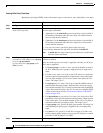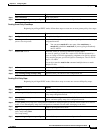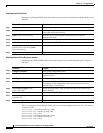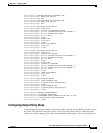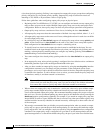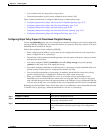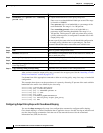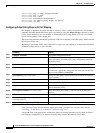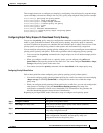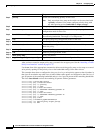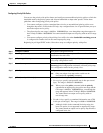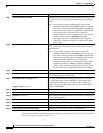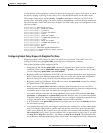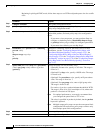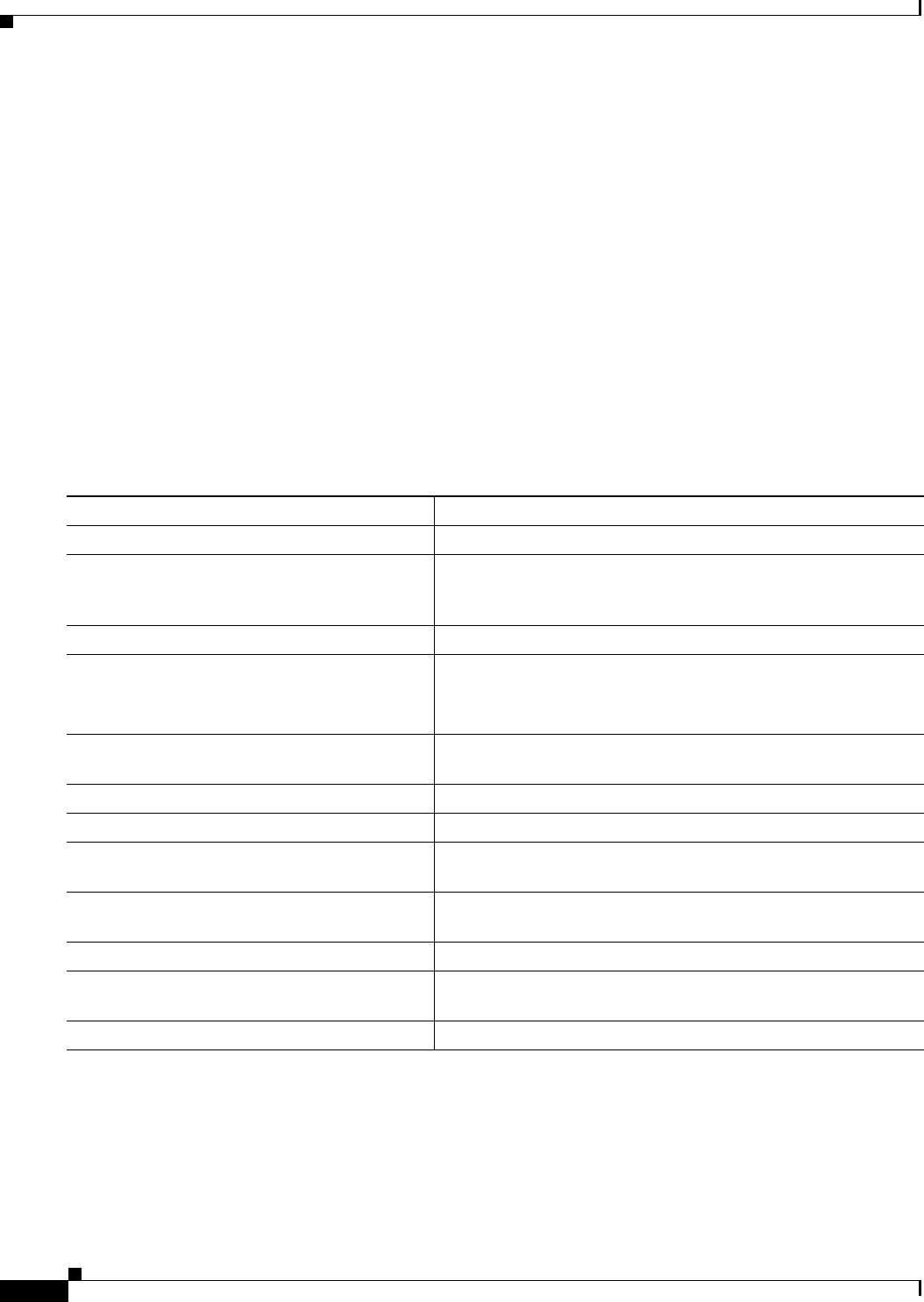
33-56
Cisco ME 3400 Ethernet Access Switch Software Configuration Guide
OL-9639-06
Chapter 33 Configuring QoS
Configuring QoS
Switch(config-pmap-c)# shape average 10000000
Switch(config-pmap-c)# exit
Switch(config-pmap)# exit
Switch(config)# interface fastethernet0/1
Switch(config-if)# service-policy output out-policy
Switch(config-if)# exit
Configuring Output Policy Maps with Port Shaping
Port shaping is applied to all traffic leaving an interface. It uses a policy map with only class default
when the maximum bandwidth for the port is specified by using the shape average command. A child
policy can be attached to the class-default in a hierarchical policy map format to specify class-based
actions for the queues on the shaped port.
The total of the minimum bandwidth guarantees (CIR) for each queue of the child policy cannot exceed
the total port shape rate.
Beginning in privileged EXEC mode, follow these steps to use port shaping to configure the maximum
permitted average rate for a class of traffic:
After you have created the hierarchical output policy map, you attach it to an egress port. See the
“Attaching a Traffic Policy to an Interface” section on page 33-37.
Use the no form of the appropriate command to delete an existing hierarchical policy map, to delete a
port shaping configuration, or to remove the policy map from the hierarchical policy map.
Command Purpose
Step 1
configure terminal Enter global configuration mode.
Step 2
policy-map policy-map-name Create a hierarchical policy map by entering the hierarchical
policy map name, and enter policy-map configuration mode for
the parent policy.
Step 3
class class-default Enter a policy-map class configuration mode for the default class.
Step 4
shape average target bps Specify the average class-based shaping rate.
For target bps, specify the average bit rate in bits per second. The
range is from 64000 to 1000000000.
Step 5
service-policy policy-map-name Specify the child policy-map to be used in the hierarchical policy
map if required.
Step 6
exit Return to policy-map configuration mode.
Step 7
exit Return to global configuration mode.
Step 8
interface interface-id Enter interface configuration mode for the interface to which you
want to attach the policy.
Step 9
service-policy output policy-map-name Attach the parent policy map (created in Step 2) to the egress
interface.
Step 10
end Return to privileged EXEC mode.
Step 11
show policy-map [policy-map-name [class
class-map-name]]
Verify your entries.
Step 12
copy running-config startup-config (Optional) Save your entries in the configuration file.



